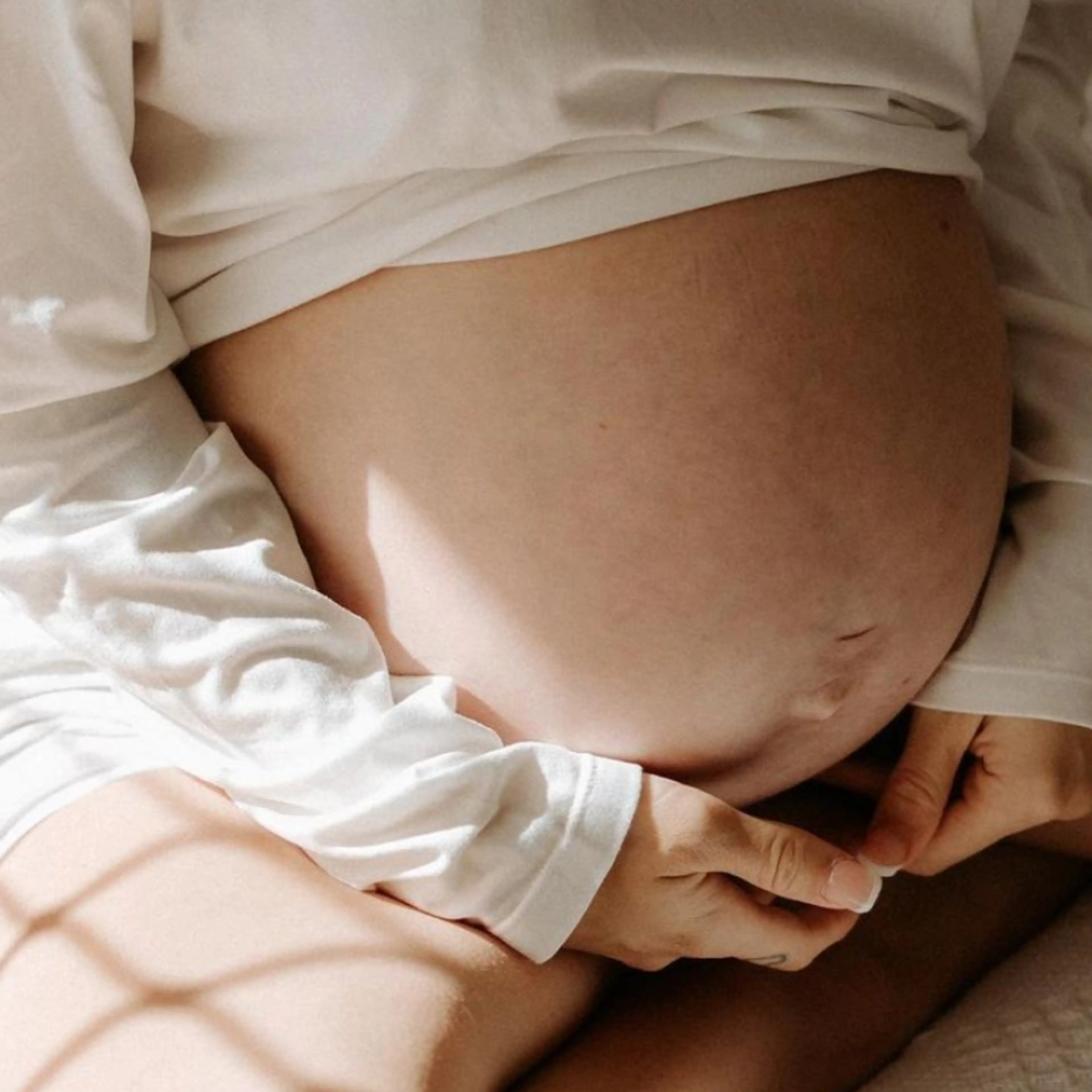You may have heard about diastasis recti through the grapevine, especially as more conversation around diagnosis and treatment crops up across social media. But there’s still a lot about this condition that might be confusing or even a little bit intimidating if you’re currently pregnant. Are you at risk of diastasis recti? How does it change your body? Is there surgery involved?
We’re here to put those worries to rest (and help sort out some of the things we’ve been seeing on the internet lately). We’ve also provided some resources for exercises you can do during pregnancy and postpartum to help with abdominal separation.
What Is Diastasis Recti?
Diastasis means separation, and recti refers to the rectus abdominis muscles (your abs). So, “diastasis recti is a separation of large abdominal muscles that doesn’t resolve on its own within the first eight weeks after childbirth,” says Dr. Oluwatosin Goje, an ob-gyn at Cleveland Clinic.
One of the adaptations your body makes during pregnancy is the stretching and separating of your abs (also called your rectus muscles) to make room for baby and allow your belly to expand. Most of the time, once you’re past the immediate postpartum period (about six to eight weeks after giving birth), those stretched muscles go back to where they were before pregnancy. But sometimes they stay separated, especially if you’ve had multiple pregnancies or are over 35 when you’re pregnant.
What does diastasis recti look like?
There are a few key physical symptoms you might notice if you have abdominal separation (these symptoms can appear both during and after pregnancy). You may see:
Bulging abdomen, or a “pooch” around your belly
Visible ab separation
Weak/poor posture
You may also feel:
Low back pain
Pelvic pain
Weak pelvic floor
Hernia, in some extreme cases
How do you know if you have diastasis recti? You likely have it if these symptoms continue beyond eight weeks postpartum. You can also perform what’s called “the finger test”: While lying on your back, place two fingers on your belly button and flex your ab muscles by doing a crunch; then, push your fingers down into your abs. Repeat this below and above your belly button, as well. If you can fit two or more fingers between your flexed abdominals, that’s ab separation. Additionally, Dr. Goje says, “You’ll notice a bulge when trying to get up or sit up from a lying-down position.” Did the test? Talk to your doctor if you think you may be experiencing diastasis recti.
How Common Is Diastasis Recti?
If you’re a little freaked out at the idea of your ab muscles pulling apart, we get it, it’s a weird thing to think about. But try not to worry—it’s pretty common (about 60% of pregnant people1 experience it). Abdominal separation in pregnancy most commonly resolves spontaneously on its own, so you may not even notice if it happens to you. It may be more noticeable depending on your weight, Dr. Goje says, especially if you don’t have a lot of fat around your midsection.
A little less common, though, is an abdominal separation that doesn’t resolve itself. One study found that about 30% of pregnant people2 continue to experience diastasis recti over a year after giving birth. If you do the finger test described above and notice there’s still a gap eight weeks after giving birth, it’s time to talk to your doctor about seeking treatment.
How to Fix Diastasis Recti
If you’re experiencing pain or muscle weakness or are annoyed by the “postpartum pooch” that abdominal separation can often cause, you’re not alone. (Keep in mind: It’s likely that your body will look different after pregnancy, possibly for a long time afterward, and having extra skin and fat around your midsection isn’t always caused by diastasis recti—sometimes it’s just your natural postpartum body.) The good news is that, if it’s diastasis recti causing those symptoms, there are a few different treatment options that exist to give you flexibility to choose what works best for you. You can work with a physical therapist, do at-home exercises or, in severe cases, get surgery (or a combination of those options).
If you’re curious about working with a physical therapist to treat your diastasis recti, here’s what to expect. Your physical therapist will ensure you’re moving well and not aggravating your muscles. “How to properly get out of bed, how to sit and stand correctly, and how to lift and carry your baby and heavy objects [are all things they will cover],” says Dr. Goje. They’ll also teach you what activities to avoid.
Exercises to improve diastasis recti
There are a few things you can do to help improve your diastasis recti symptoms from the comfort of your home. And your at-home routine doesn’t have to be complicated. You don’t even need any equipment; just a few simple movements that focus on pulling the abs in (don’t push them out!) typically work well to improve symptoms. Try:
Abdominal draw-ins:
Pelvic tilts and/or glute bridges:
Heel slides:
Toe/heel taps:
These exercises help diastasis recti by “increasing abdominal pressure by pulling in the abdominal wall muscles,” Dr. Goje explains, meaning your abs get flexed enough to start to move closer together.
Your doctor may recommend additional exercises, or other exercises depending on your physical needs and capabilities.
If you’re doing any weight-bearing exercises (like weighted pelvic tilts), it’s recommended that you wear an abdominal binder to help support your midsection. This is especially important if you’ve experienced any muscle weakness in your abs, as the binder can increase abdominal pressure and keep you from dropping your weights.
Keep in mind: You want to avoid any exercises that push the abs apart or in an outward direction. Traditional core exercises like crunches, planks, push-ups, and twists can actually make diastasis recti worse.3
Diastasis Recti Surgery
Exercise may not be an option for you, or maybe you’ve tried exercise and you’re still experiencing symptoms a year later. If it’s affecting your daily life (with pain, urinary incontinence, etc.) or if you’d still like to reduce your abdominal bulge, there’s also the option for surgical treatment.
Diastasis recti surgery involves making an incision below the belly button and surgically bringing the abdominal muscles back together. The procedure is very similar to abdominoplasty, or a tummy tuck, though a tummy tuck involves removing excess fat or skin as well. If you decide to have surgery to correct your abdominal separation, it’s possible to get a tummy tuck at the same time.
Note: Surgery for diastasis recti is often considered cosmetic, so it may not be covered by your insurance.
Diastasis Recti Recovery Time
We wish we had a straight answer for how long it takes to fully recover from pregnancy-related abdominal separation, but the truth is that it’s different for everybody. Generally, though, “the wider the gap between rectus muscle sheaths and bigger disruption to the system, the longer it takes for rehabilitation to be fully accomplished,” Dr. Goje says.
If you’ve got persistent diastasis recti (i.e. it doesn’t resolve itself after eight weeks) and you choose to do abdominal exercises and/or work with a physical therapist, it could be up to 12 months before your abdominal wall closes.
If you’ve gotten surgery to repair the abdominal gap, although the gap is fully closed immediately after the surgery is complete, it can be anywhere from two to six weeks (depending on any swelling you experience) before you’re considered to be fully recovered.
How to Prevent Diastasis Recti
We’ll get this out of the way right now: there’s no way to 100% prevent abdominal separation. But depending on where you are on your pregnancy journey, there are a few things you can do to minimize it.
If you’re in the first or second trimester of your pregnancy (or even if you’re in the planning, trying-to-conceive stage), ensuring you have a strong core starting out is the best way to limit how much your abs will separate later on in your pregnancy. The exercises shown above are a good way to start building or maintaining a strong core, and you should still avoid core-straining exercises like sit-ups and planks (TMI, but if you get constipated, don’t strain when you push).
In your third trimester, especially if you have a particularly large belly or notice some symptoms of diastasis recti, you can wear a support band around your belly to keep your abdominals compressed and, well, supported.












